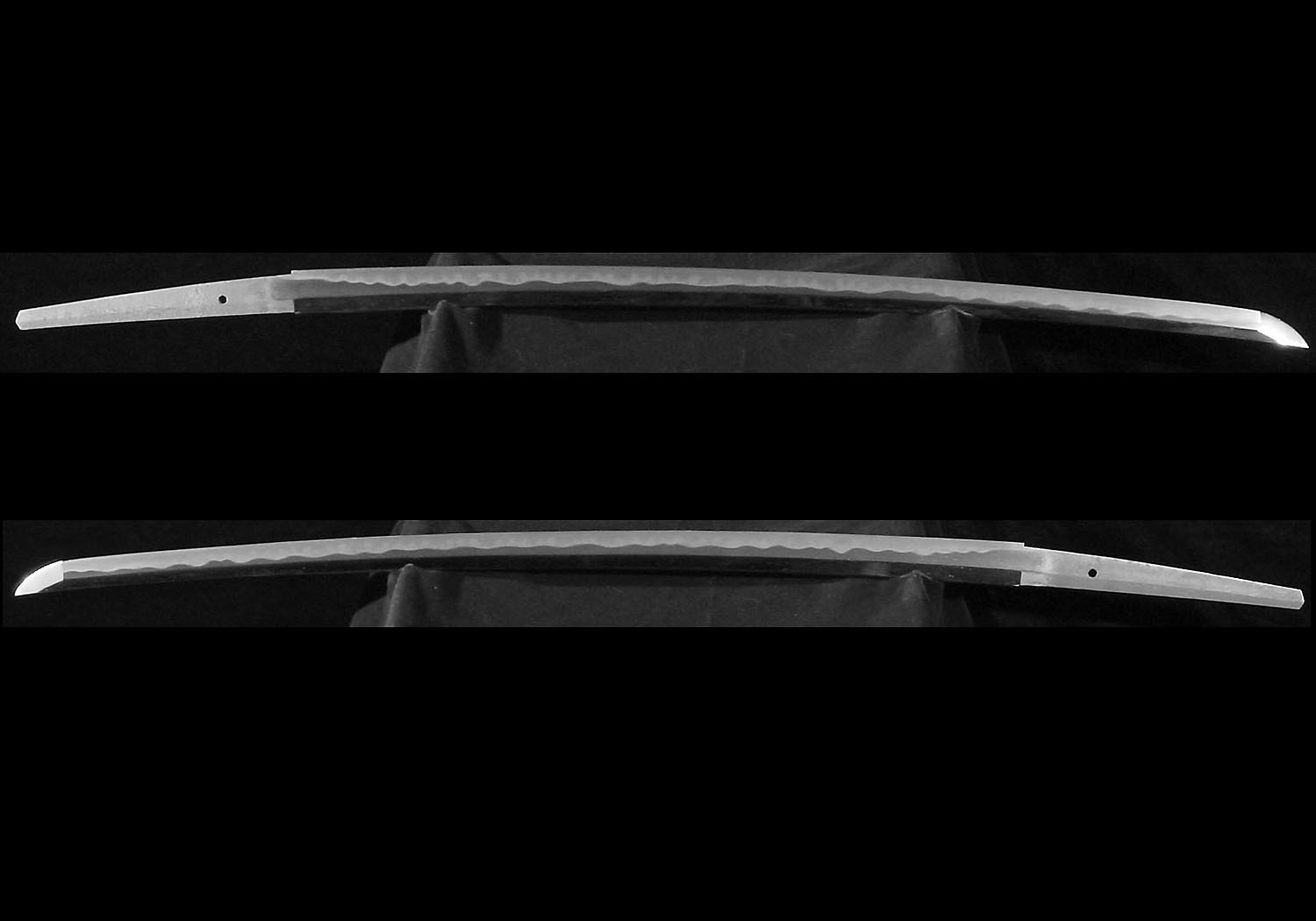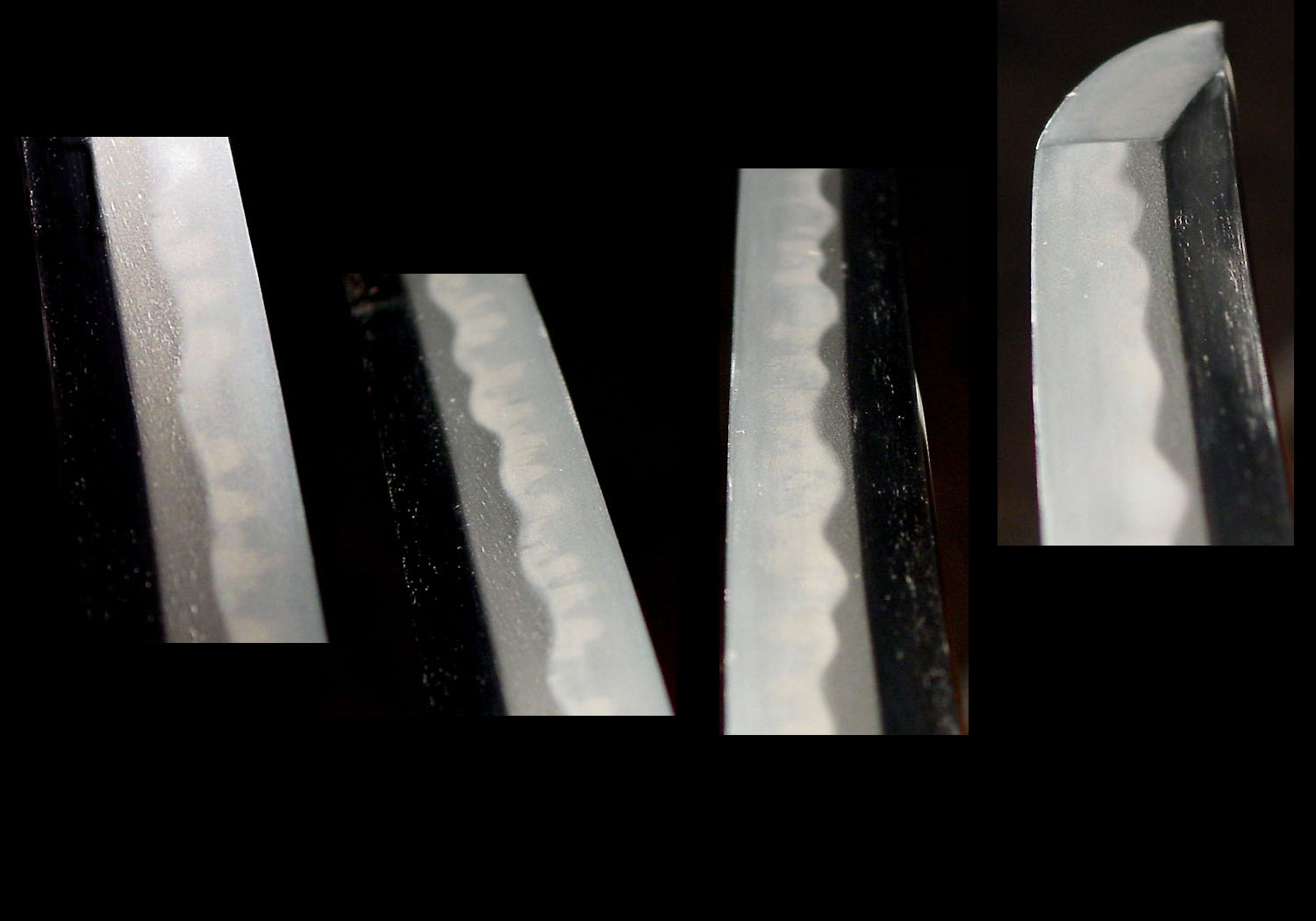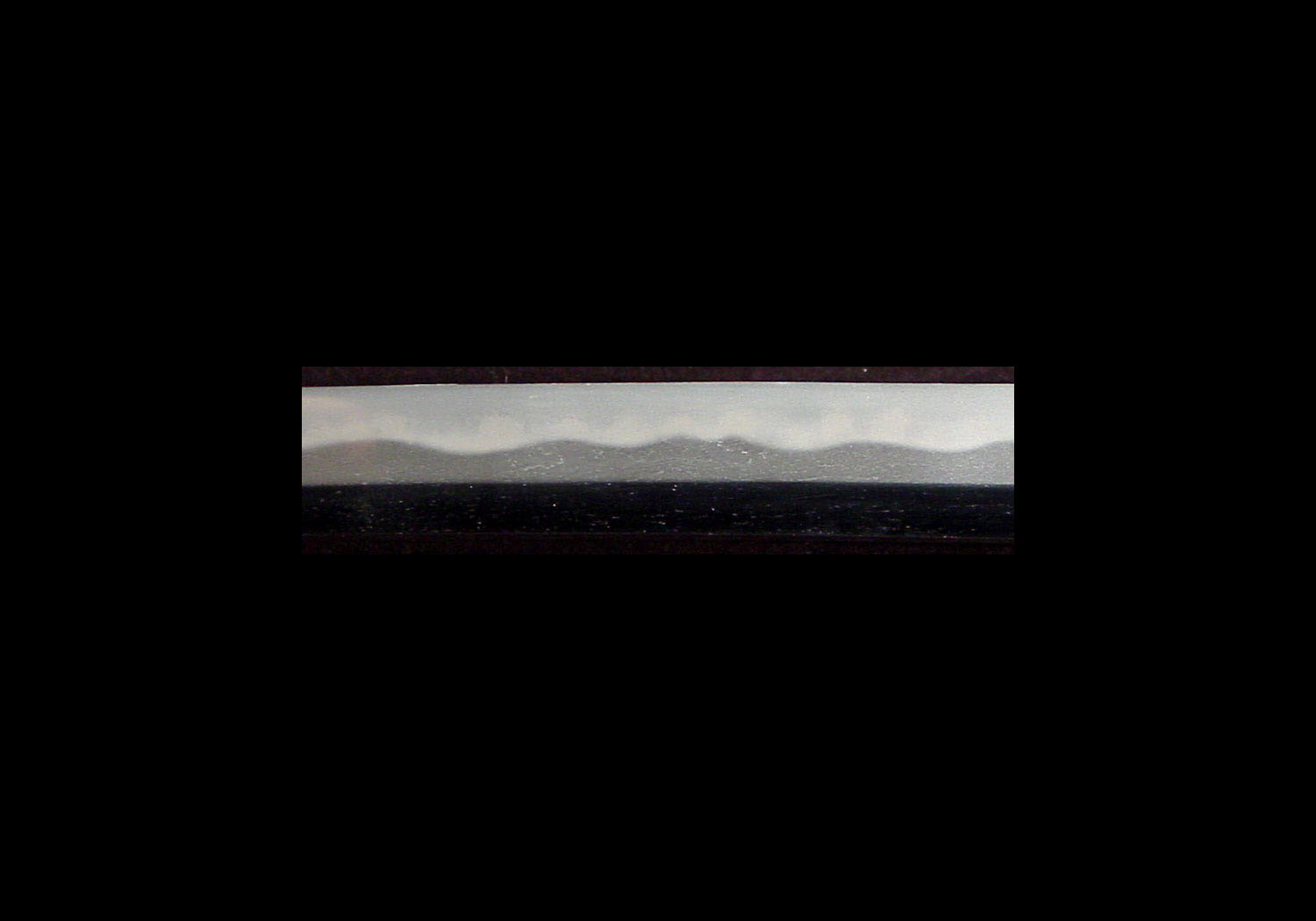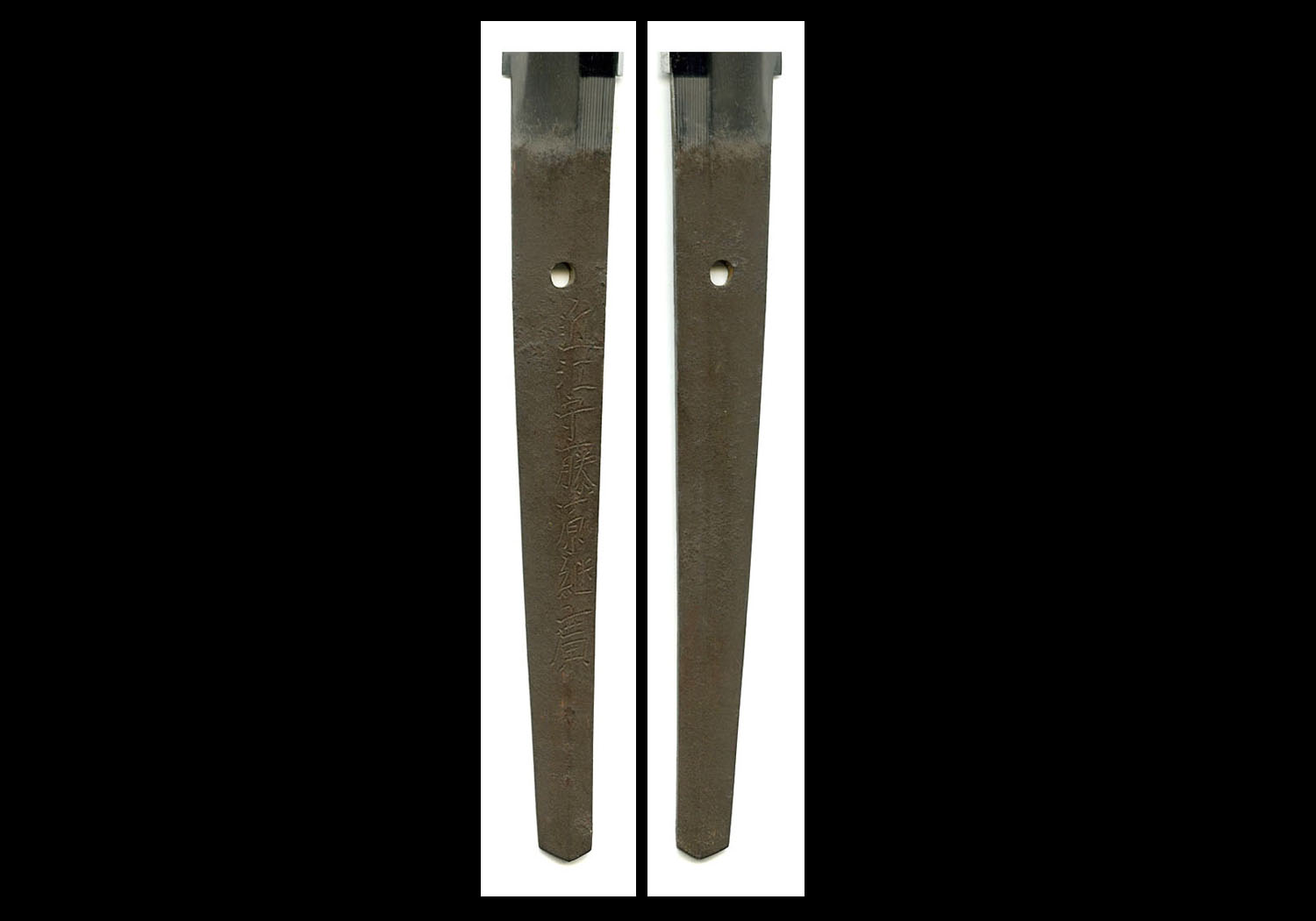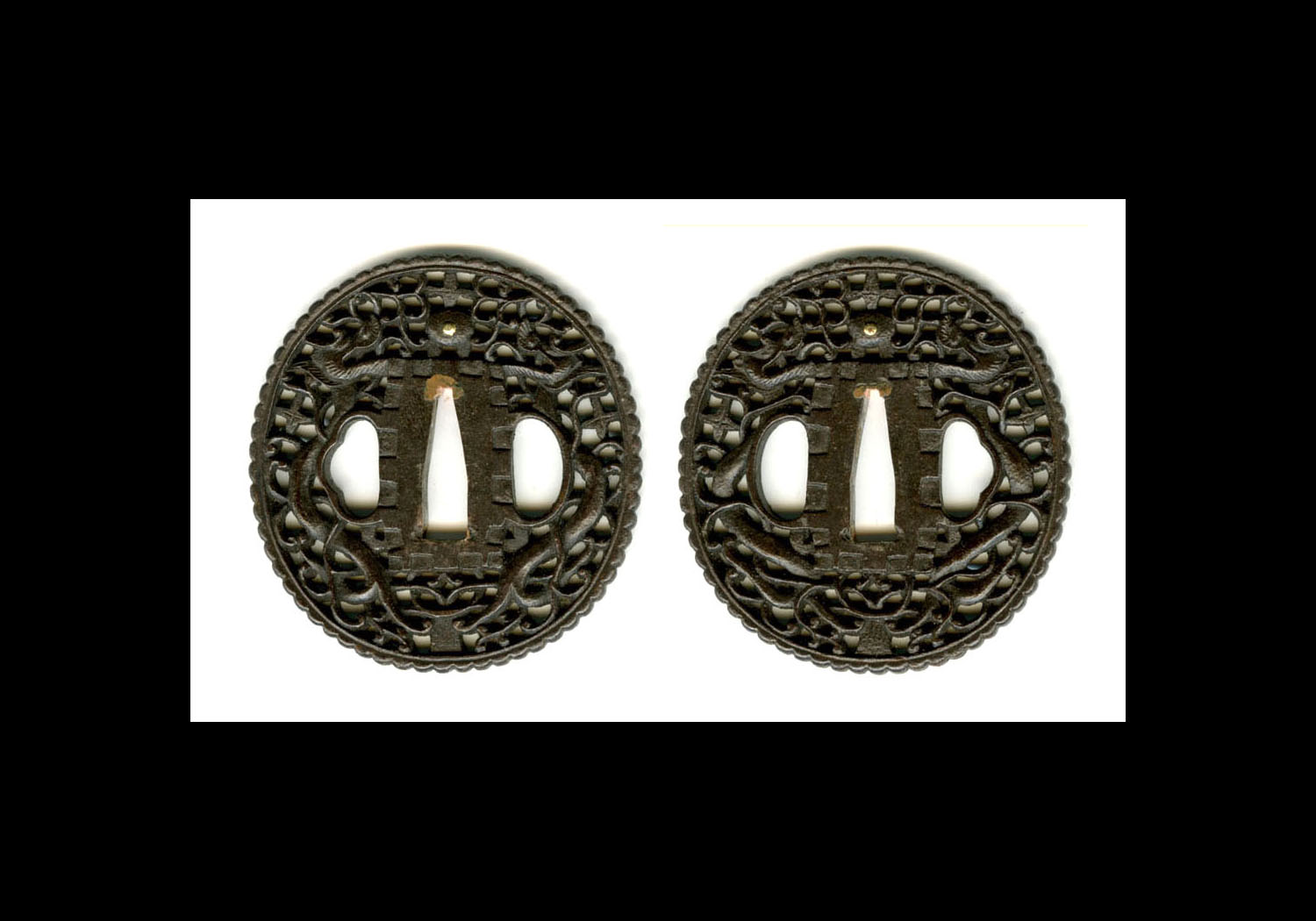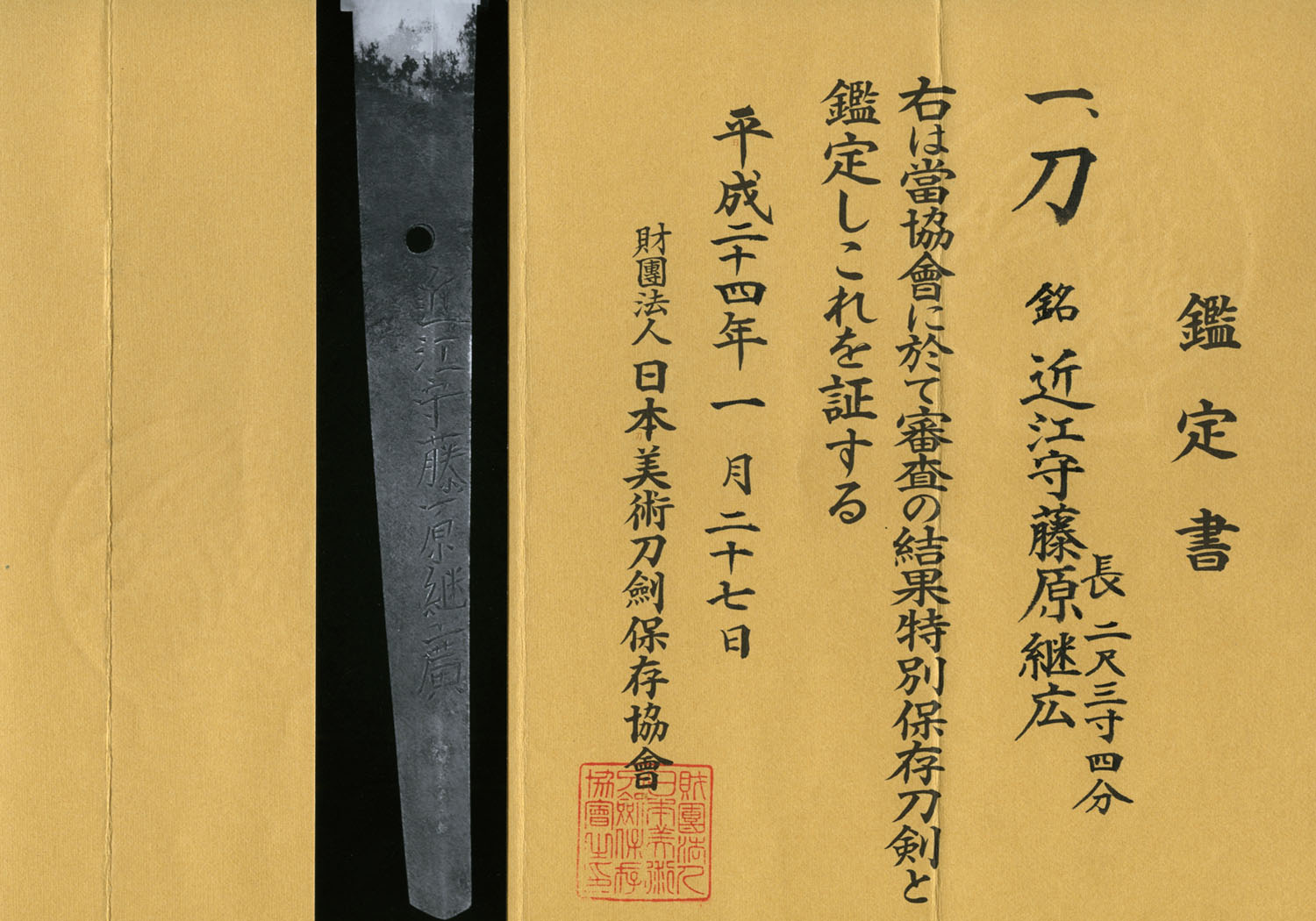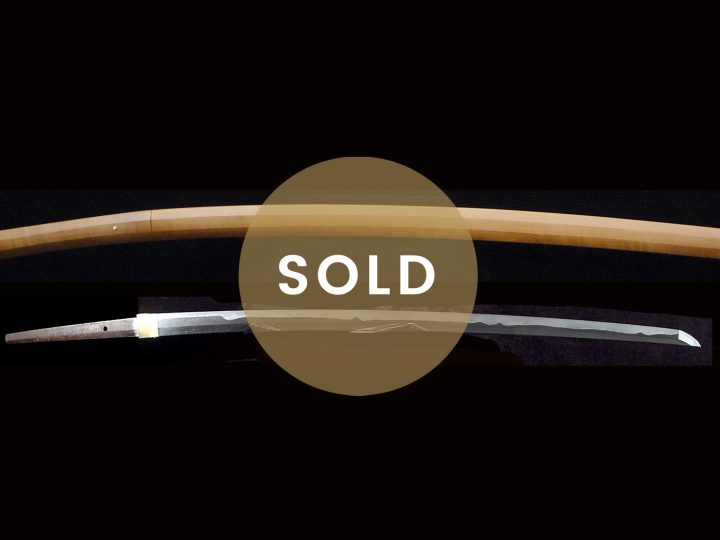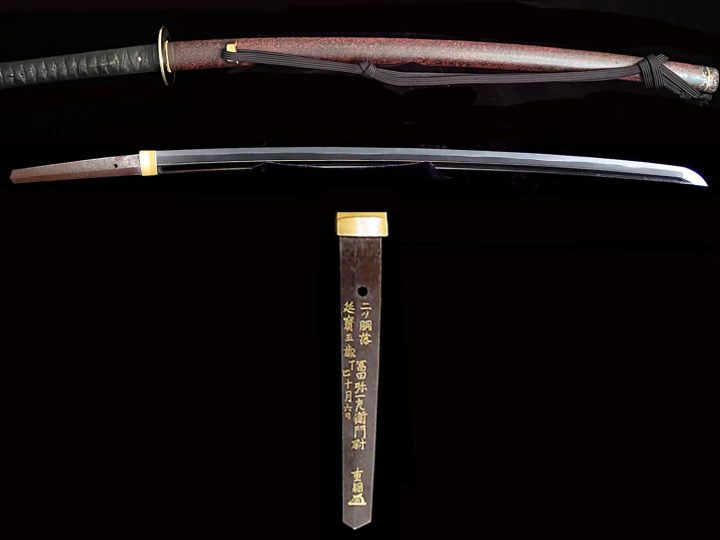
Omi no Kami Tsuguhiro was a member of the Echizen Seki school. He was one of many swordsmiths who moved to Echizen province from Seki in Mino province around the middle of the 17th century. They were most active during the years 1658 through 1680. They worked in what we call the Shinto tokuden tradition that was fashionable at the time, as well as their original Mino tradition.
Besides Tsuguhiro, the following smiths are classified as being part of the Echizen Seki) school. Shigetaka, Kanenaka, Kanetane, Kanenori, Kanenori, Kanemasa, Kanetoshi, Kanetaka, Hirotaka, Yoshitane, and Kanenori.
Omi no Kami Tsuguhiro worked around the Kanbun era (1661). He produced swords in both Edo and Omi. His katana generally have a pronounced mokume jihada and the hamon is normally suguba or gunome midare. He is rated as a wazamono smith (extreme sharpness). An interesting point about some of the Echizen smiths of the Kanbun period is that they did not inscribe the Kuni name (Echizen) on the omote, however, there were many who inscribed Echizen Ju on the ura. This was common with Tsuguhiro, Shigetaka, Hirotaka, and Kanenaka.
This katana measures 27.875 inches or 70.8 cm in length. The width at the hamachi is 1.26 inches or 3.2 cm. The width at the kissaki is 0.85 inches or 2.2 cm. The thickness of the kasane is 0.26 inches or 0.7 cm. It is shinogi-zukuri, iori mune in shape. It has a graceful torii sori that is very slightly tending toward saki-zori. The jihada is mokume with some itame and masame. There is masame hada in the shinogi-ji. The hamon is gunome midare with a few areas of tagari-ba showing his Mino roots. This is a very beautiful blade in good polish with no problems. It comes with NBTHK Tokubetsu Hozon papers attesting to its quality and condition.
This blade is accompanied by a very nice set of Edo period koshirae that can be viewed in the photos above. Please note that the Namban tsuba comes with Hozon papers.


